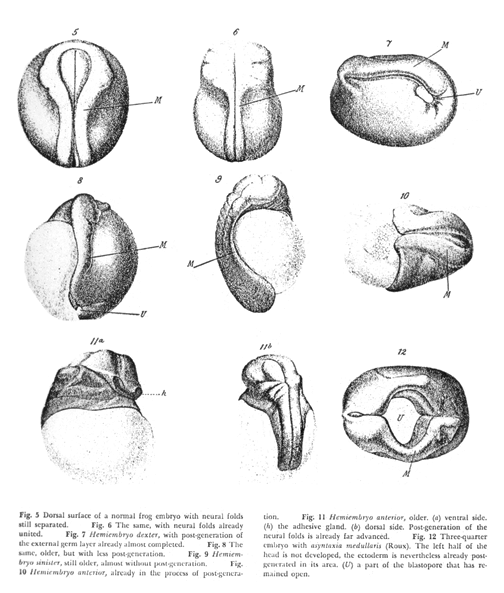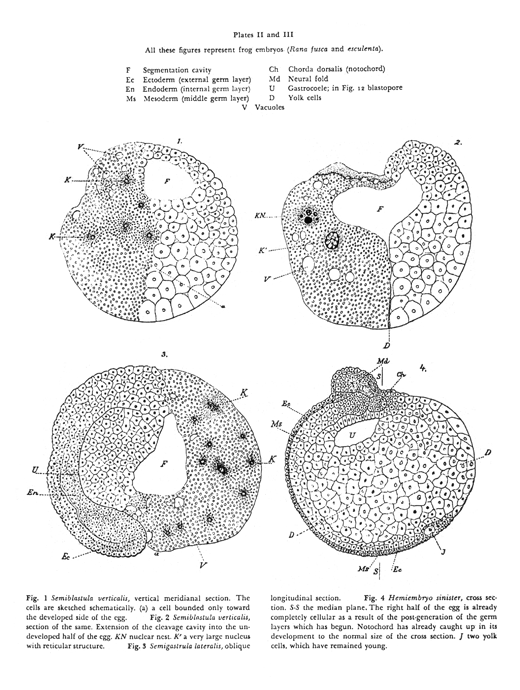More lecture notes for October 21, 2020
Roux "hot needle" experiment (~1880s)
Wilhelm Roux did a famous experiment intended to confirm the theory of different parts of each embryo getting only certain genes. He poked red-hot needles into 4 or the first 8 cells or early frog embryos; or sometimes poked hot needles into 2 of the first 4 cells, or 1 of the first 2 cells.The idea was to kill or severely damage half the cells of an early embryo, with the expectation that the undamaged cells would continue and develop into the same tissues that they normally form, even though the "killed" cells failed to differentiate.


Textbooks use the verb "killed" to refer to the effect of the hot needle on embryonic frog cells. Actually, the original paper says the "killed" cells were still alive, and that after several hours they began to divide again.
Anyway, people interpreted the result as support for the idea of different genes being distributed unequally to different cells. (Nobody really understands the results of this experiment, but it has been repeated with the same results.)
Also relevant to this discussion: Conjoined twins can result when two adjacent cell masses in an embryo do not separate completely from each other.

conjoined twins in a chicken